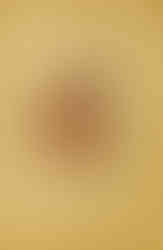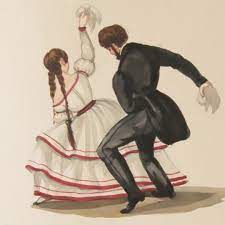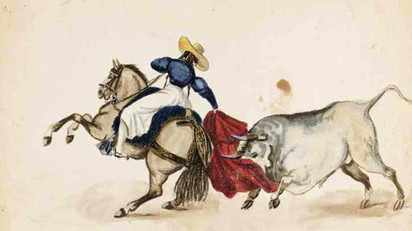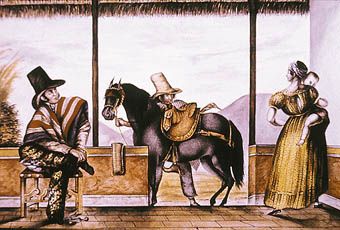Pancho Fierro
- PEROL CHICO
- Jan 7, 2022
- 2 min read
Updated: Jan 27, 2025

Francisco Fierro Palas (c.1807-1879), called "Pancho" Fierro was an Afro-Peruvian painter, known primarily for his ‘costumbrista’ watercolours, images that chronicled the types, customs, and costumes of everyday Limeños (residents of Lima).
Stylistically, Fierro’s work was more picturesque than scientific or academic, particularly in terms of its free interpretation of space and proportion. But his lively images captured the atmosphere of everyday life in Lima with an eye that visiting artists never achieved.
He was baptized on the 5th of February, 1809, the son of Nicolás Rodríguez del Fierro, a priest, and a slave from the household of Nicolás" father, Don Antonio, a Colonel in the Militia Battalion.
He had been manumitted (the act of freeing slaves by their owners) upon his birth, following a rule that said no son of a Spaniard could be born a slave, but was raised by his mother"s family. There is no record of him receiving any artistic training, so he was probably self-taught. He also painted wall murals, all of which have been destroyed or covered over.
Today, he is remembered for his watercolours, painted on sign cards, depicting everyday scenes from Peruvian life. He created over 1200 of them and their popularity produced many imitators. The writer Ricardo Palma owned a large collection which his heirs gave to the City of Lima. Other large collections were acquired by the French painter Léonce Angrand and the Russian zoologist, geographer and ethnographer Leopold von Schrenck, whose collection is now at the "Museum of Anthropology and Ethnography" in the Kunstkamera, Saint St. Petersburg. According to an obituary in El Comercio, Francisco "Pancho' Fierro died of paralysis in a hospital on Peruvian Independence Day.


















